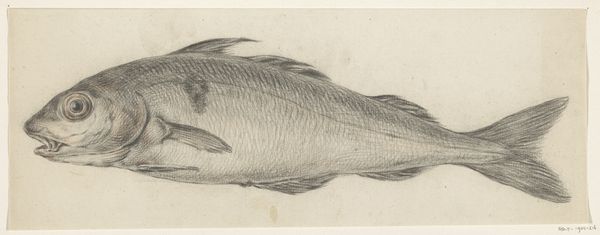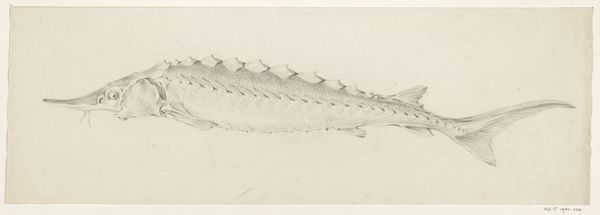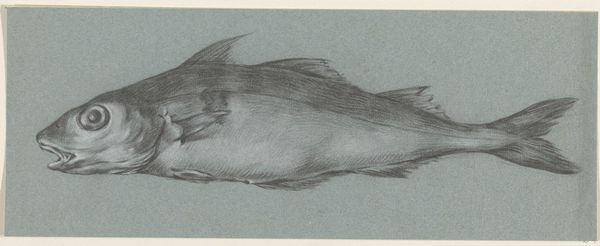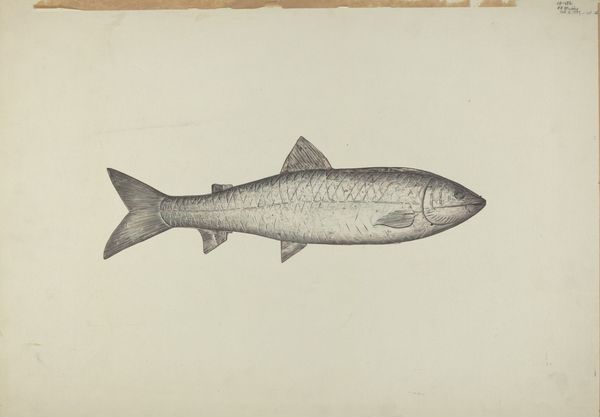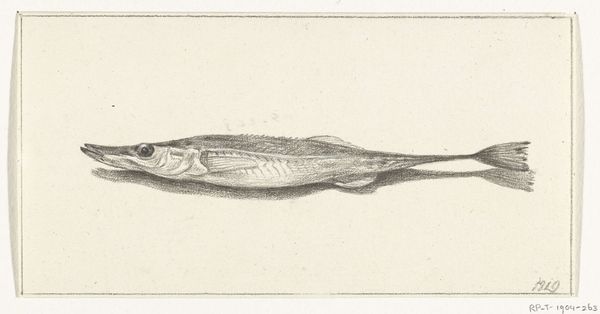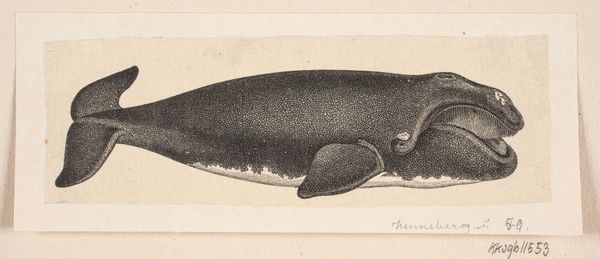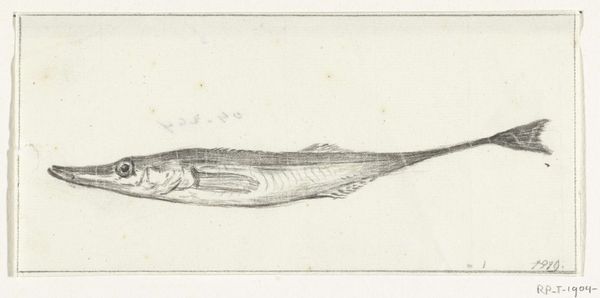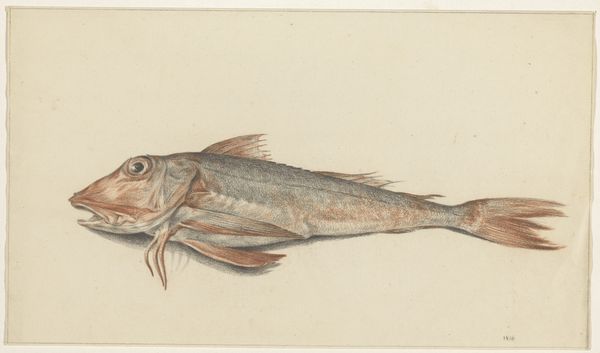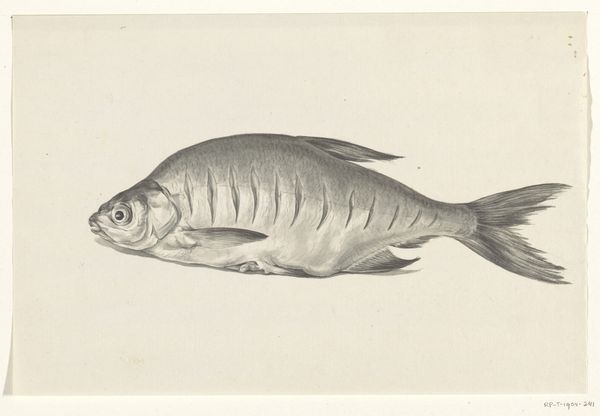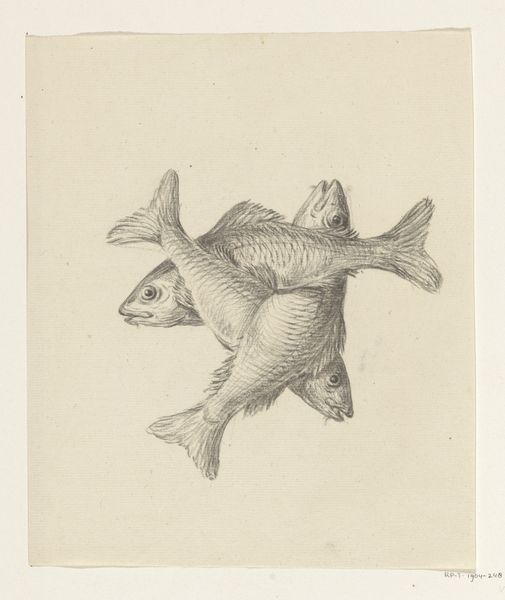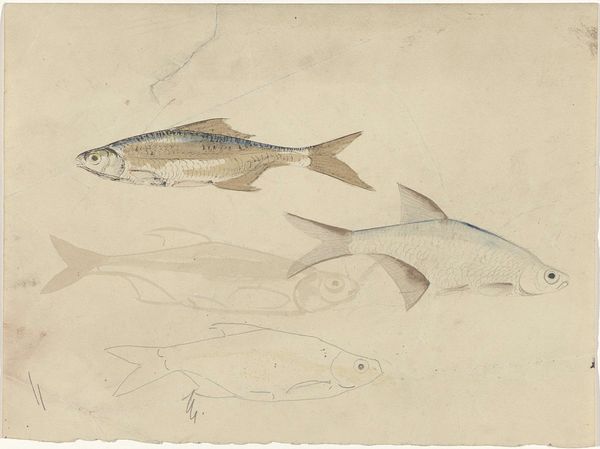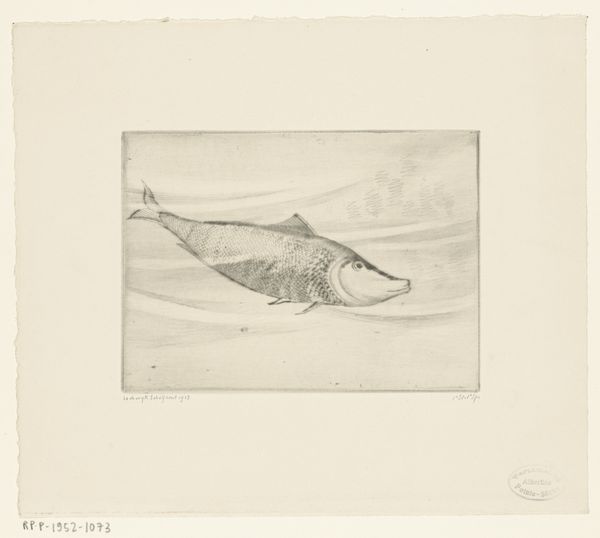
drawing, pencil, graphite
#
pencil drawn
#
drawing
#
pencil sketch
#
charcoal drawing
#
pencil drawing
#
pencil
#
graphite
#
portrait drawing
#
pencil work
#
academic-art
#
realism
Dimensions: height 128 mm, width 389 mm
Copyright: Rijks Museum: Open Domain
Editor: Here we have "Vis, naar links," a pencil drawing of a fish, created sometime between 1775 and 1833 by Jean Bernard. It’s quite a detailed sketch, almost like a scientific illustration. What’s your interpretation of why an artist would create something like this? Curator: This drawing presents an interesting case. We tend to view art as separate from scientific illustration, but during this period, the lines were often blurred. Consider the rise of scientific societies and the increased interest in documenting the natural world. Do you think this piece could reflect the influence of Enlightenment ideals? Editor: That makes sense. It could be documentation as well as art. The precision of the lines does remind me of botanical illustrations. How do you think the public would have viewed this type of work? Curator: Its public reception would have been tied to prevailing views about the purpose of art itself. Was art primarily for aesthetic pleasure, or did it also serve an educational function? This was hotly debated! A drawing like this might have been seen as valuable for its accuracy, contributing to knowledge, perhaps even displayed in natural history collections rather than art galleries. Consider, who had access to see this work, and how does that access shape meaning? Editor: So it really depended on the context and the audience. It's fascinating how a simple drawing of a fish can tell us so much about the history of art and science. Curator: Precisely. By examining the social and cultural forces at play, we see that this work operates on multiple levels, reflecting both artistic skill and scientific inquiry. A simple drawing prompts complex considerations about knowledge, art, and society. Editor: I never thought about a fish having such a multifaceted story. It highlights how context profoundly shapes our understanding of art. Curator: Indeed, and this underscores the enduring value of art historical analysis – constantly re-evaluating the dialogue between art and its world.
Comments
No comments
Be the first to comment and join the conversation on the ultimate creative platform.
